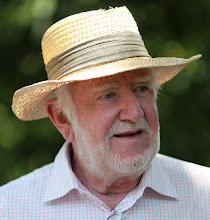Sixty five years ago, my parents bundled me into the car and we set off on a long trek - my first big traffic jam.
The event was the arrival in Cape Town of HMS Vanguard, carrying King George VI and Queen Mary, and their two Princesses, Elizabeth and Margaret. After an hour and about 5km of travel, the car overheated, so we gave up, parked on the single-carriageway de Waal Drive where we had a view, and saw the mighty battleship tie up in Duncan Dock, right at the end of Adderley Street (the Foreshore was a recently reclaimed wasteland in those days, and the Heerengracht did not exist).
A few nights later we went to town again, this time because my father had wangled an invitation to a reception on the ship. As the sun set, I stood on the foredeck and looked up at the mighty 15" guns in wonder. However, our visit was cut short - my mother was a notoriously bad sailor, and the motion even in the dock proved too much for her.
A month or so after that we were dragged off to the Rosebank Show Grounds (now the University of Cape Town's Lower Campus), where the Royals were to speak. I think the occasion was Princess Elizabeth's 21st birthday, but I recall little of the day other than a struggle to see their Majesties between the legs of the crowds.
Six years later, and I, as a Sea Cadet Chief Petty Officer, found myself sent off to the Coronation of Her Majesty Queen Elizabeth II. Clad in my Royal Navy uniform, with bell-bottomed trousers carefully ironed with the seven horizontal creases that represented the seven seas, and my seaman's cap whitened with the best Blanco, I marched in a squad of twenty Commonwealth Sea Cadets across Westminster Bridge, round Parliament Square, to take position in Victoria Street right outside the Abbey. It was a grey morning, with occasional showers, and before long the Blanco had run from my cap and left white streaks down my serge jerkin.
Though I was cold and rather wet, it became exciting as the guests started to arrive. Many were richly robed and carrying coronets. One old chap, laden down with ermine, was being henpecked by his wife - "Yes, of course I've got my sandwiches and my potty!" and he raised his robes to reveal package and pot hanging from his belt - and a wonderful line in purple stockings, held up by some rather natty suspenders.
Finally we were all called to attention, and Queen Elizabeth swept up in her carriage. She emerged with a long train behind her, and a bevy of ladies-in-waiting dashed forward to pick it up before it fell to the damp pavement. There was thunderous music from the Abbey, then long silences, more music, then all the bells began to peal and Her Majesty emerged, beaming, climbed into her gilded carriage, and was off in a flash, surrounded by the Horseguards. All the other distinguished visitors joined the great procession, and were followed by the various armed forces, each with their bands, and finally we were dismissed and told to find our own way down to Buckingham Palace, and to meet up at Victoria Station later that afternoon.
This year was the jubilee of Her Majesty's accession to the Throne and 59 years since the Coronation. It all seemed so long ago. Most of the travel to Britain was by ship - by air you used flying boats and it took eight days. Much of London looked a little toothless - the gaps where bombs had fallen were still there. Right opposite the Abbey was a blank wall with a row of fireplaces up it, and on one mantelpiece you could just see what looked like a clock.
There was rationing of food and clothing and petrol and - - oh, the list went on and on. And black-and-white television had just arrived, so visits to my family meant being ushered into a darkened room, staring at a flickering picture of the day's football matches until supper was served, when the lights went on and they suddenly saw me for the first time. "Ooer! Cousin Philip! Well I never! Where have you been, lad? Really? Is it nice out there?" and then it was time to leave.
In spite of it all, I felt a certain pang of nostalgia over the Jubilee. So off we went to Cape Town's celebration, the performance of Gilbert and Sullivan's Yeoman of the Guard. Much of their work now seems a little dated, but this production was fresh and full of fun. There was a host of details I had never noticed before - the echoes of Shakespear in the chats between the jester and the jailor; the send-up of the madrigal; the touches of Rigoletto; the patter songs a la Donizetti; but above all the killer song, I have a song to sing, oh! What a memorable tune, and what splendid words. The only thing that I missed was standing up at the end of the performance and waiting while the band played God save the Queen!



